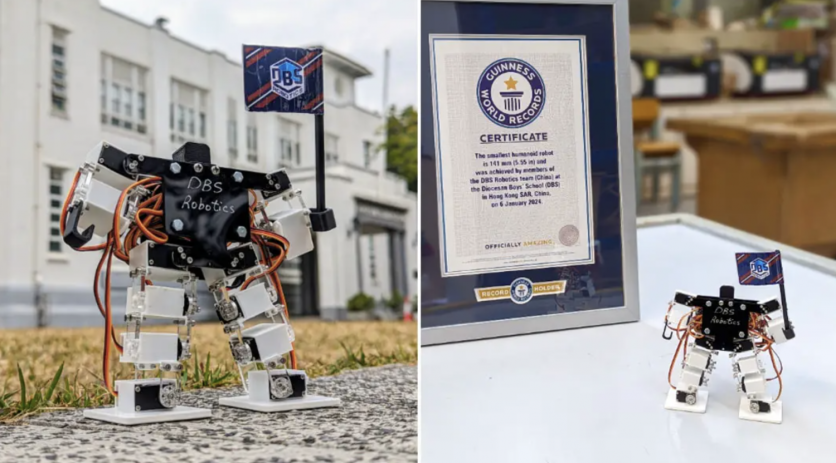Students from Diocesan Boys' School in Hong Kong have achieved a remarkable feat by constructing the world's smallest humanoid robot, standing at a mere 5.5 inches tall.

A record-breaking feat of engineering has been achieved by four members of the robotics team at Hong Kong’s Diocesan Boys’ School, who have created the world’s smallest humanoid robot.
Constructing World's Smallest Humanoid Robot
The robot, crafted using acrylic panels and 3D-printed parts developed in-house at the school's robotics lab, measures just 141 mm (5.55 in) in height. Interesting Engineering reported that this achievement surpasses the previous record set by Zain Ahmad Qureshi of Pakistan in 2022.
Standing at a diminutive height of 141 mm (5.55 in), this robot is shorter than a standard ballpoint pen by 11.3 mm (0.44 in). The innovative minds behind this creation are students Aaron Ho Yat Fung, Isaac Zachary To, Justin Wang Tou Duong, and Ngo Hei Leung.
In their quest for the world's smallest humanoid robot title, students embarked on a meticulous journey to ensure their creation boasted an impressive range of movement. This involved programming the robot to articulate its shoulders, elbows, knees, and hips while mastering the art of bipedal motion.
Assembling the Robot
The process kicked off with the students utilizing computer-aided design (CAD) software to meticulously craft the blueprint of their miniature marvel.
Once the technical specifications and necessary components were finalized, they sought the expertise of a factory to produce custom servo motors tailored to their needs. These servo motors, commonly referred to as 'servos,' are integral to the robot's functionality.
They enable precise rotation and movement, allowing the robot to manipulate its limbs with precision. To coordinate the intricate interplay of these components, the team acquired a 16-channel servo control board.
Additionally, they sourced a range of hardware essentials, including screws, nuts, wires, and batteries, as reported by Guinness.
Within the confines of their school's robotics lab, the students meticulously crafted the robot's acrylic panels and 3D-printed components. According to the team, this fusion of advanced technology and innovative design resulted in the creation of a truly remarkable robotic marvel.
After acquiring all the necessary components, the students proceeded to assemble their robot. They began by constructing the legs, utilizing eight servos to facilitate movement in the feet, knees, and hips, thus confirming the robot's ability to walk on two legs.
Next, they focused on assembling the arms, employing servos to enable movement at the shoulders and elbows.
Simultaneously, the team tested the positioning of the battery and control board. Initially, the selected battery proved inadequate for the robot's size, prompting a switch to a more compact 7.4V lithium-ion battery.
The control board was then mounted on the robot's back, allowing manipulation via onboard controls. Additionally, the students integrated a mobile application paired with the servo control board, enabling the execution of pre-programmed actions.
Beyond aiming for a world record, Forbes reported that the students conceived the robot as an educational tool with multiple facets.
Specifically designed to be compact, affordable, rechargeable, and programmable, it is intended for use in STEAM (science, technology, engineering, the arts, and mathematics) education workshops.
Targeting ethnic minorities and economically disadvantaged families, this initiative seeks to promote inclusivity and accessibility in technological education, according to the team.

ⓒ 2025 TECHTIMES.com All rights reserved. Do not reproduce without permission.


![Best Gaming Mouse For Gamers With Smaller Hands [2025]](https://d.techtimes.com/en/full/461466/best-gaming-mouse-gamers-smaller-hands-2025.png?w=184&h=103&f=6fd057ef777bd39251d4e7e82e9b23f1)

